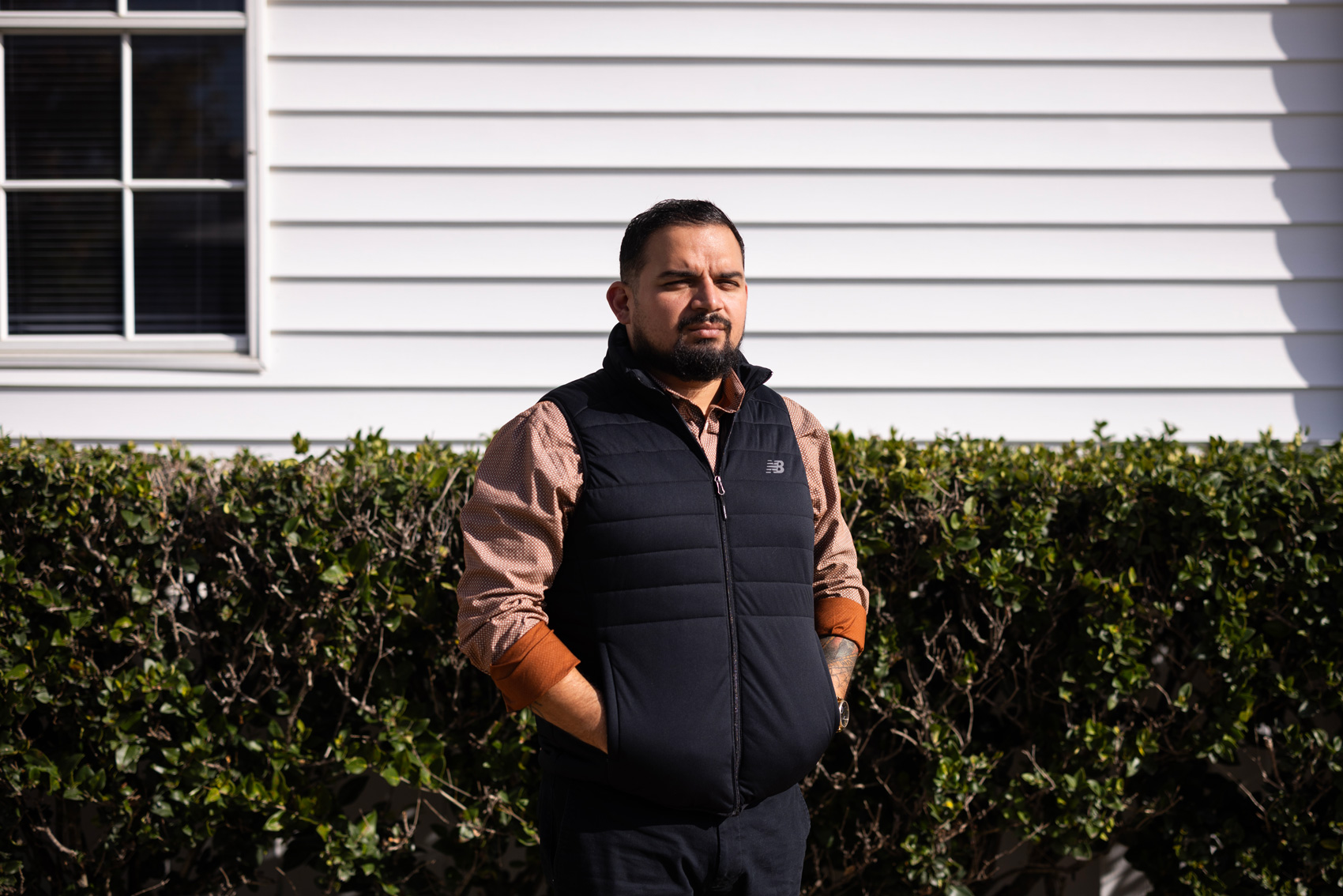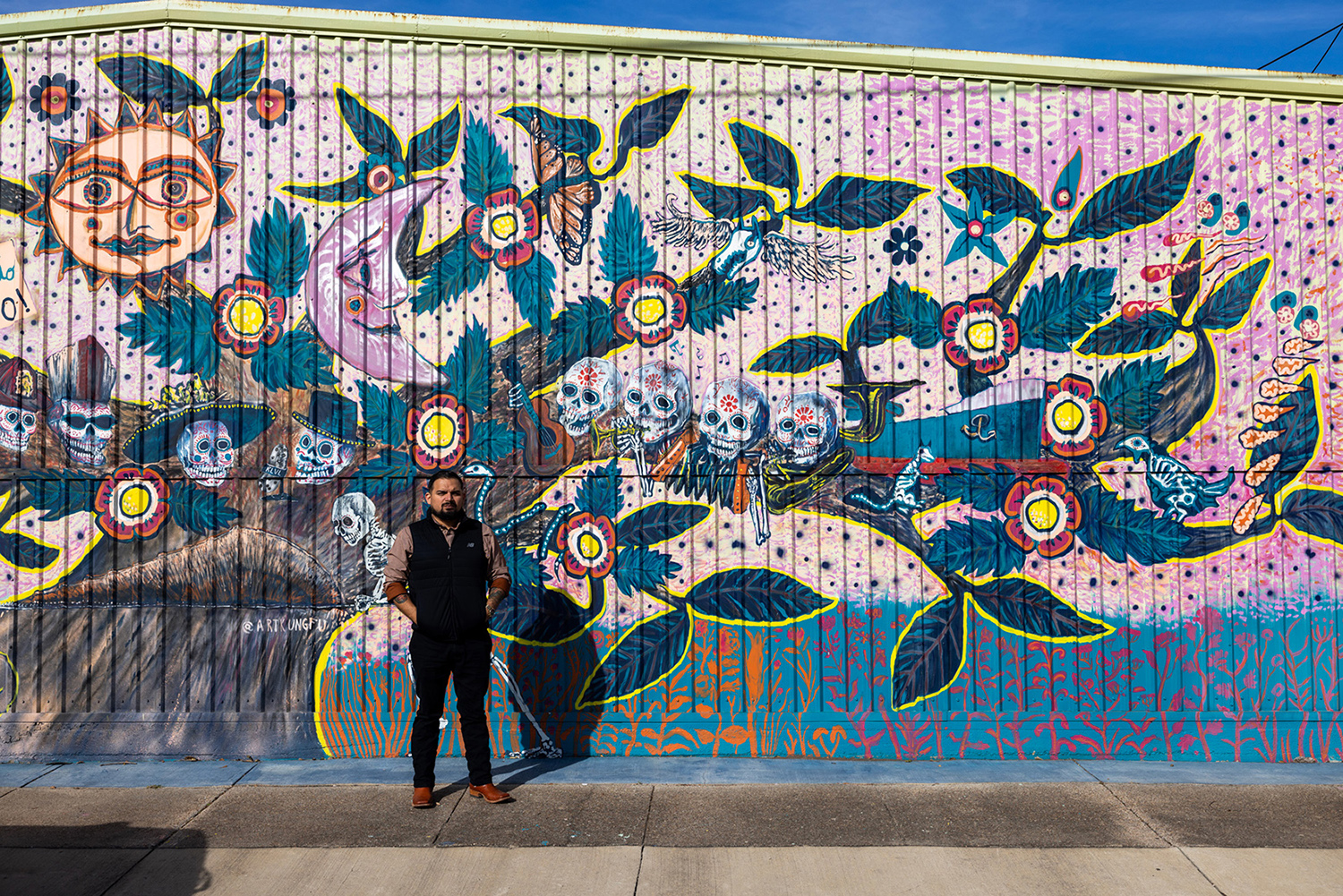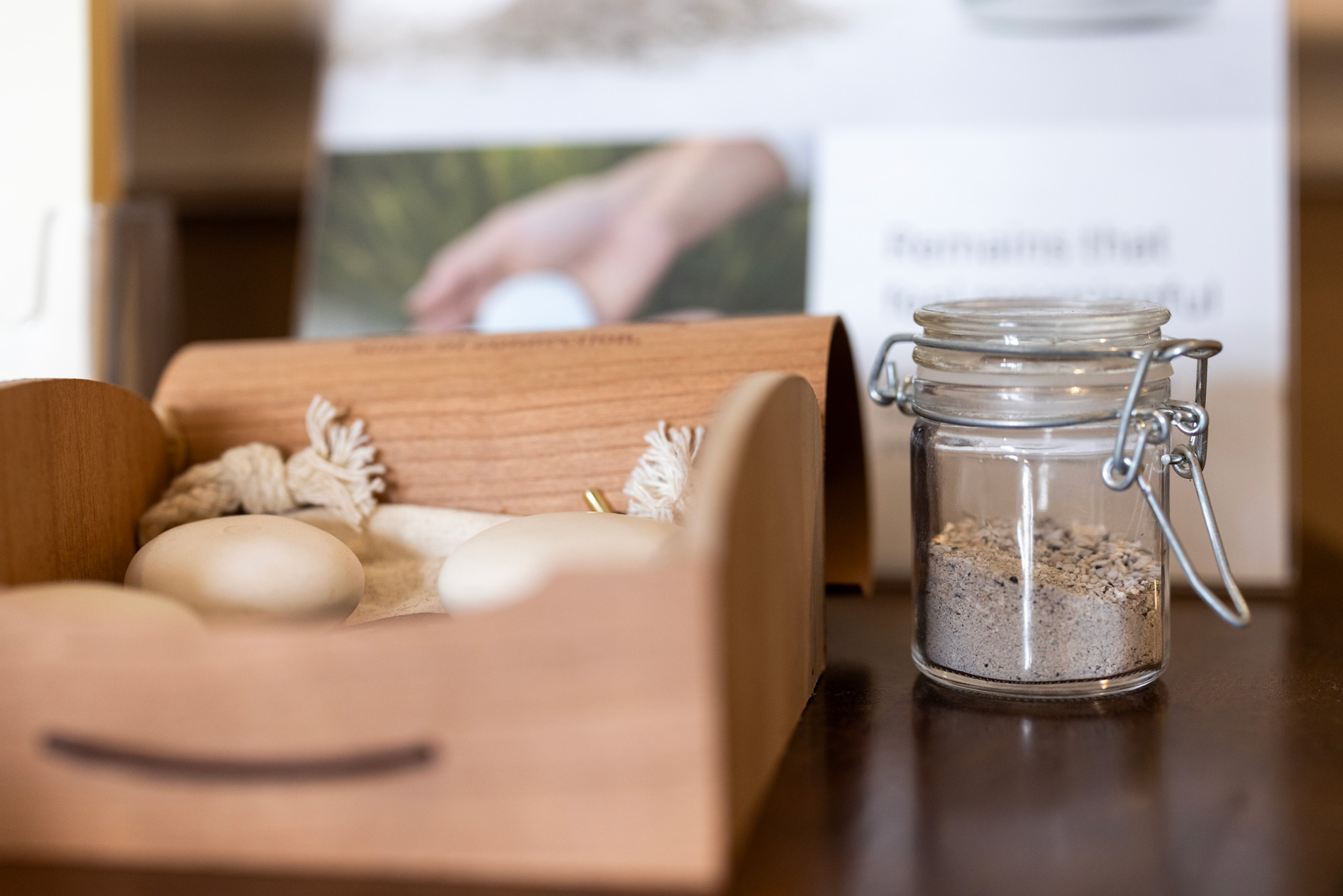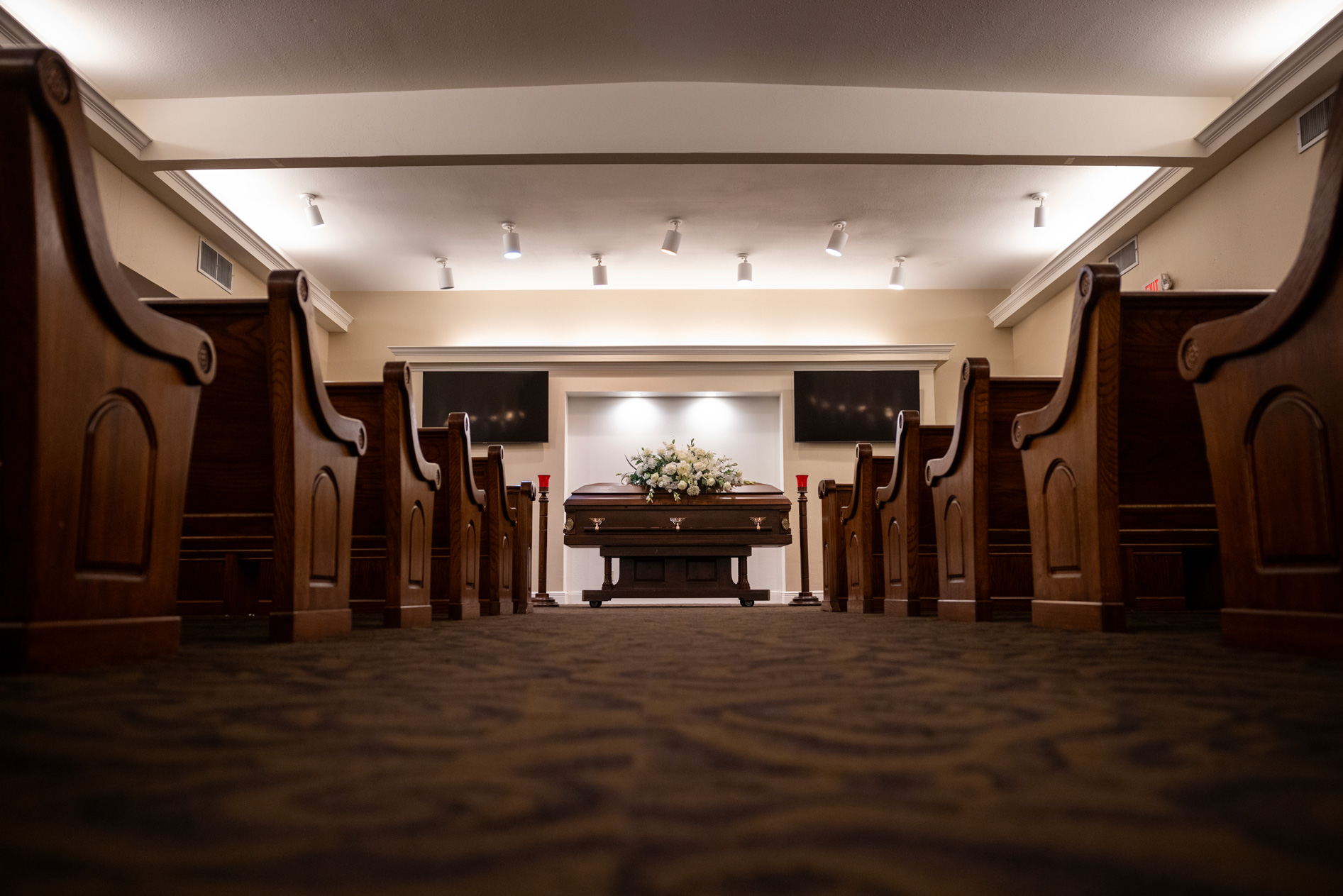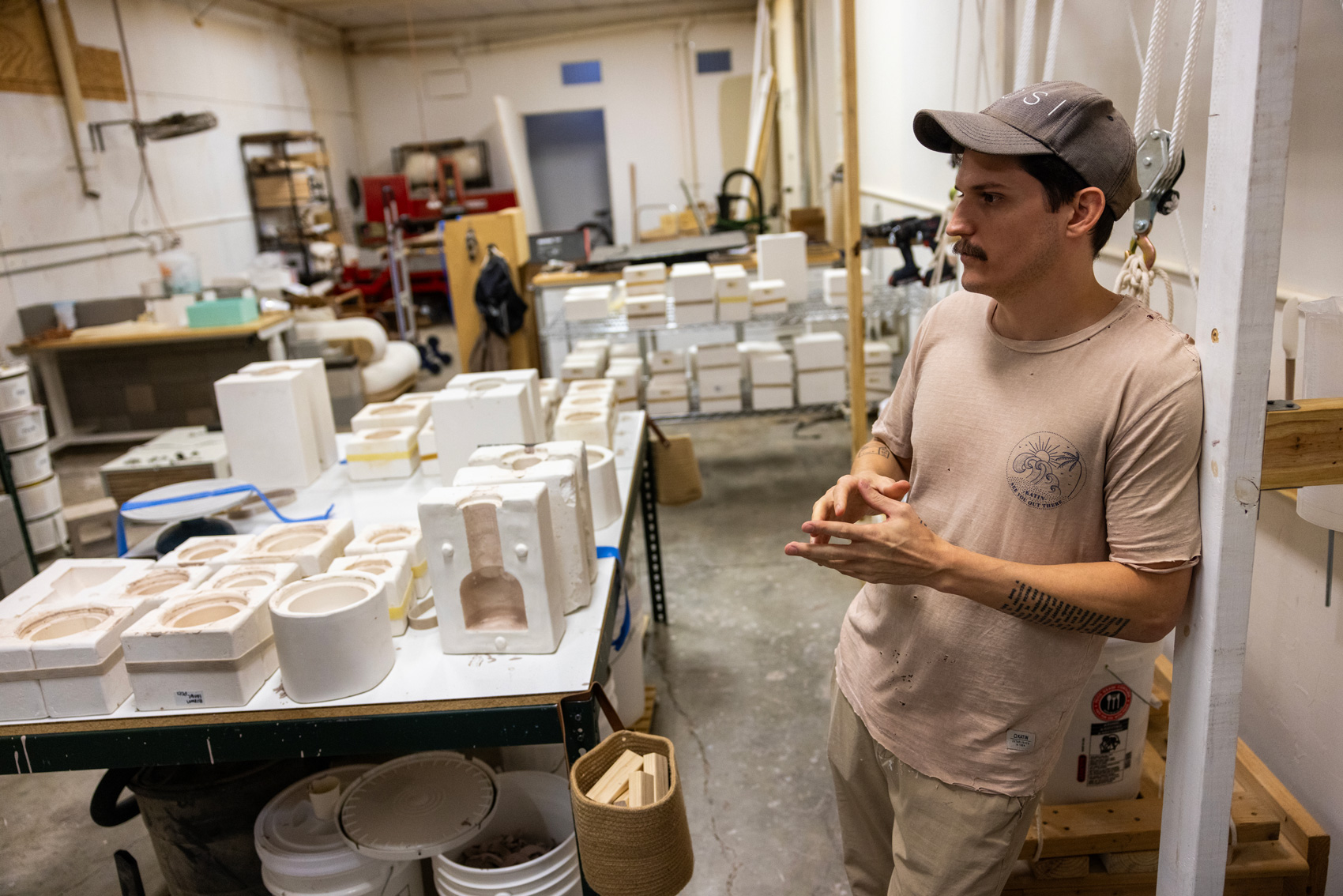|
Getting your Trinity Audio player ready...
|
Felix H. Morales Funeral Home has been a Canal Street landmark since first opening its doors more than 90 years ago. Now, four generations later, Joe Morales is grappling with the ripple effects of gentrification in the community his great-grandfather helped build.

In the past seven years, county documents show, the value of the land the business sits on has nearly doubled as Houston’s East End becomes a hotspot for new residents and investors alike. Morales gets the phone calls at work that many of his residential neighbors are all-too-familiar with: Developers offering big chunks of money to buy him out.
It’s tempting at times, Morales says. Especially as the influx of new residents brings with it changes in the very nature of services he offers.
“Cremation is so heavy nowadays,” he says. “When I first started here, we were probably at about 20 percent cremation. And now we’re over 50 percent — and that doesn’t pay the bills, to be honest with you. It really doesn’t. We rely on funerals.”
Houston’s East End continues to gentrify rapidly, as the residents moving in are whiter and wealthier than the families who have for so many generations called this sliver of the city home. They’re also younger, which means they’re less likely to be religious. And Morales sees this change play out in his bottom line: The average cost of a funeral with a burial, he says, is between $15,000 and $20,000. Cremations start at $1,500 — only 10 percent of the cost of a funeral.

“The surroundings have affected us,” he says.
As the barrier to entry for small-time entrepreneurs soars with rent hikes, and profits are sent to outside investors rather than the business owner down the street, the East End’s reputation as an open door to the American dream is fading. Morales worries that the neighborhood’s gentrification spells extinction for his family’s business.
And Morales is certainly not alone in this. Over the past several months, I’ve spoken with more than a half-dozen East End entrepreneurs who worry over the effects gentrification is having on their companies — and their dreams.
The cost of dirt
Most of the East End’s real estate investment is what experts call “adaptive reuse” – meaning property owners are changing the purpose of existing infrastructure, like the East End’s omnipresent warehouses. But even these old buildings are reaching stratospheric prices.
Kristen McDade, a land broker with Cushman Wakefield, pinpoints the moment that East End commercial spaces started to really appreciate: The 2012 completion of the Dynamo’s soccer stadium just east of downtown.
“Back at that point in time, you could buy dirt anywhere from $20 to $40 a square foot” in the surrounding neighborhood, McDade says. By about 2016, she says, the rates for commercial spaces were up to about $50 per square foot.
“In less than five years, the price of dirt doubled. Then from 2016 to 2023, another seven years later, I think it’s just about doubled again,” she says.
The neighborhood is still more affordable than other parts of town, like Montrose or the Heights, which gentrified in a similar fashion in the decades before the East End’s real estate landscape took off, McDade says. But it’s that rate of acceleration that worries local business owners.
A space for makers
I met Alison Spanner on a rainy Friday morning as she worked in her sewing studio – one half of a 400 square-foot space she shares with another business owner. Her studio is tucked inside an old warehouse that has morphed into a makers-pace for arts-and-crafts business owners operated by Starseed Hostel. Spanner owns the aptly-named Gather + Sew, and spends her days sourcing secondhand textiles like quilts and curtains, which she sews into custom clothing. There’s not much money in it. Yet.
Before finding her studio space inside the warehouse, Spanner ran her business from her home’s guest room. That meant trudging up and down to her attic to dig for the proper material for a project, since the guest room didn’t have enough space to accommodate the stacks of vibrant fabric that line her studio today. She needed a studio – on a budget.
“I am here because this was literally the only place I could afford to rent a space,” says Spanner. She looked at similar buildings in other parts of town, including Spring Street and Sawyer Yards, and found they were “double the price of here. There was just no way that I could have paid my rent.” Even now, paying $300 a month for her half of the studio, things are tight.
“All the money I’m making right now just gets reinvested in the business. Like, I don’t pay myself,” she says. “I’m just trying to grow it to a point where it’s an actual business.”

Starseed Hostel leases space from Concept Neighborhood, which has quickly bought up a long string of these industrial buildings prime for adaptive reuse across the East End. The hostel prides itself on providing the exact solution Spanner needed. Many of its tenants are in the same boat as Spanner.
Mikey Kendrick, who runs Starseed, had to close his furniture-making company, Year of None, earlier this year. His rent, at just shy of $0.50 a square foot for his 1,200 square-foot Starseed studio, was a key part of that equation, he says.
Jeffrey Kaplan, one of the principals at the development company Concept Neighborhood, notes that rents have remained flat since the company purchased the property from Starseed’s previous landlord mid-lease.
But with the lease set to renew in 2025, amid the escalating prices throughout the neighborhood, Kendrick worries what will happen when it’s time to renegotiate.
“If we lose our lease, then there's 15 or 20 tenants here that have to go back to working in a garage or whatever, and can’t afford the other spaces available in town,” Kendrick says.
Buying, he says, is out of the question: Before signing at Starseed, Kendrick offered $100,000 to purchase an old laundromat a couple miles away. He was outbid by a developer.
A developer’s role
“That’s the thing that sucks about development: There’s this narrative that developers spin that they want everyone to buy into,” says Kendrick, who focuses much of his effort on keeping Starseed afloat for his fellow makers. “It’s like, if they don’t develop the space then what happens? But what happens is that the community develops it.”
That’s getting harder to do as the “price of dirt” increases. Drive through the East End, and you’ll notice the companies snapping up properties are big, corporate entities rather than the mom and pops that have long defined the neighborhood’s culture.
These large companies – like Midway, which recently developed the East River complex just across the Bayou from Morales Funeral Home, or Concept Neighborhood, which has developed The Plant at the corner of Sampson and Harrisburg – speak about the importance of community input. But there’s an elephant in the bank vault that can’t be ignored:
“We have to be really strategic in terms of how we can create these hyperlocal opportunities for entrepreneurs, and still have a covenant – we have a fiduciary (duty) to investors,” says Kaplan, from Concept Neighborhood. “We have to still make sure we’re managing this in a market-based way.”
What market? That’s what Neeraj Tandon asked me earlier this week, when we discussed Neighbors, the pizza shop he owns in The Plant. Tandon bought the business that previously owned the restaurant How To Survive on Land And Sea, but quickly found the numbers weren’t working. Both Tandon and Kaplan note that a business should spend about 10 percent of its revenue on rent. But Tandon says the rent upon leasing his space exceeded $10,000 a month – more than 30 percent of the restaurant’s revenue.
No wonder the restaurant had to close. Over several months, Tandon initiated a series of discussions with Concept Neighborhood; eventually his monthly rent was moved from a “market-based” figure to a percent of revenue. Now, each month Tandon shows Concept Neighborhood his books, and they charge him 15 percent of what’s come in. It’s not the 10 percent that he and Kaplan agree would be ideal, but it’s about half of what he’d paid at the outset.
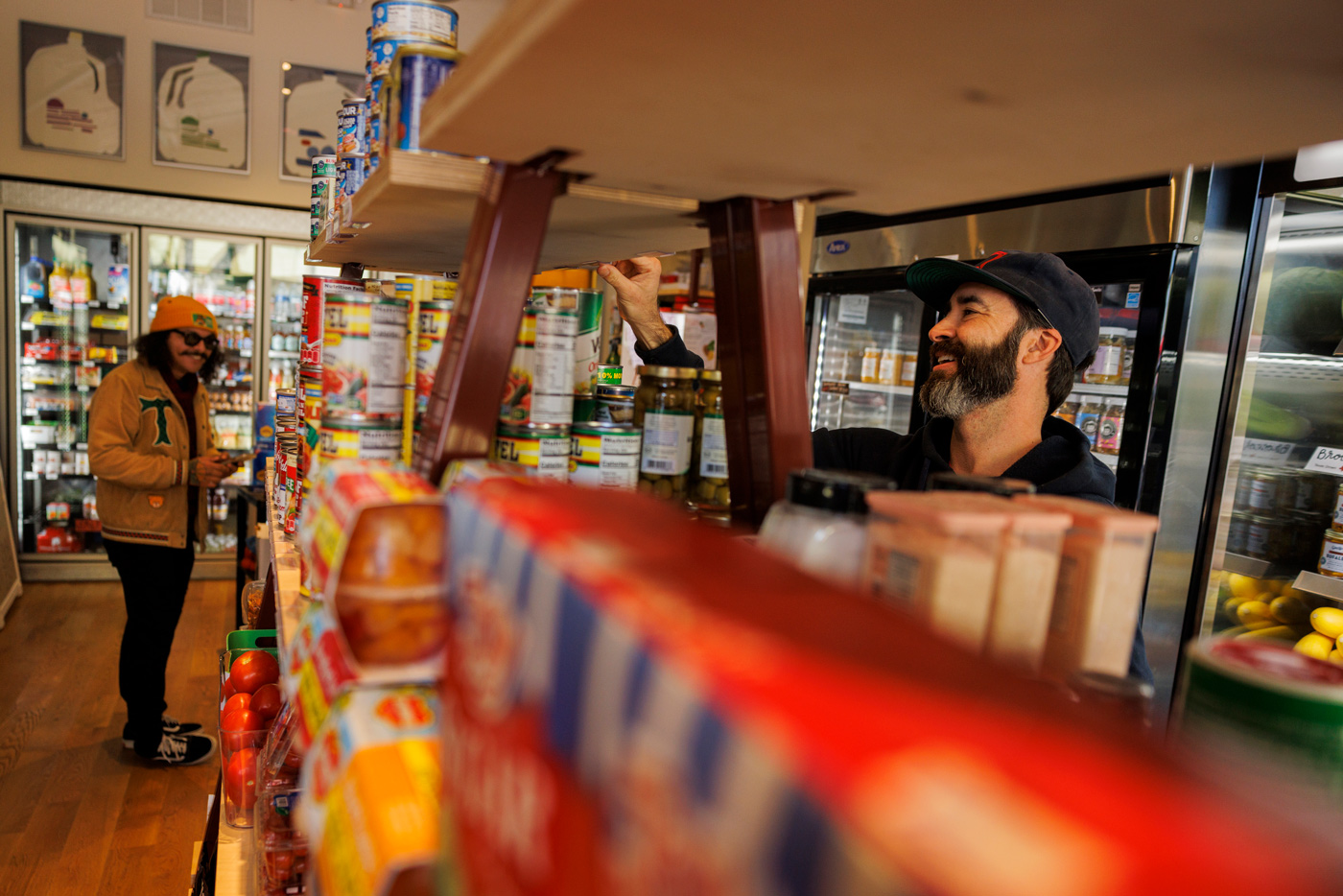
The role of reinvesting
That lower rent, Tandon says, is the reason he’s been able to make the pizza shop work. He tells this anecdote: “Our ice machine broke, and we needed a new one for months. Our bar manager had to go to the gas station every morning and buy bags of ice, about $80 a day,” he says. Though a new ice machine would have paid for itself in two months, Tandon couldn’t afford it, given his rent.
“Now,” he says, “we have our ice machine and it's helped us focus energy on other areas of the business.”
Reinvesting money in the business allows him to better pay his employees and keep affordable prices for his customers. Ultimately, he says, that adds up to a reinvestment not just in his few hundred square feet of space, but in the entire community.
“The goal is for us to create value in the neighborhood, and for the value to stay in the neighborhood and be spent in the neighborhood,” he says.
His revenue-based rent has allowed him to, as he says, “build a runway” for success. But he knows he’s lucky. Other businesses in The Plant continue to struggle; just last week Little Red Box Grocery, which I’ve written about before, announced plans to close.
It raises a question posed best by Kendrick: “What happens when nobody can start a business anymore, other than people with investment money from out of town?”
Morales, who runs the funeral home on Canal, says he hopes the business that has been in his family since its founding in 1931 can continue strong for years to come. As the owner of the property, the Morales family has a leg up over other entrepreneurs who rent. But as the “cost of the dirt” beneath his business climbs along with the rest of the neighborhood, so too do his taxes. He says his annual tax bill has increased by 67 percent since 2015.
With every passing year, those phone calls from developers become more tempting.
“I always say, ‘Let’s hit 100 years. Let’s hit that mark,’” says Morales. “So we have about eight years left. But eight years from now, I can’t even imagine what it’s going to look like here.”
Share your Houston stories with me. We can start on Twitter, Facebook and Instagram. Or you can email me at [email protected].


